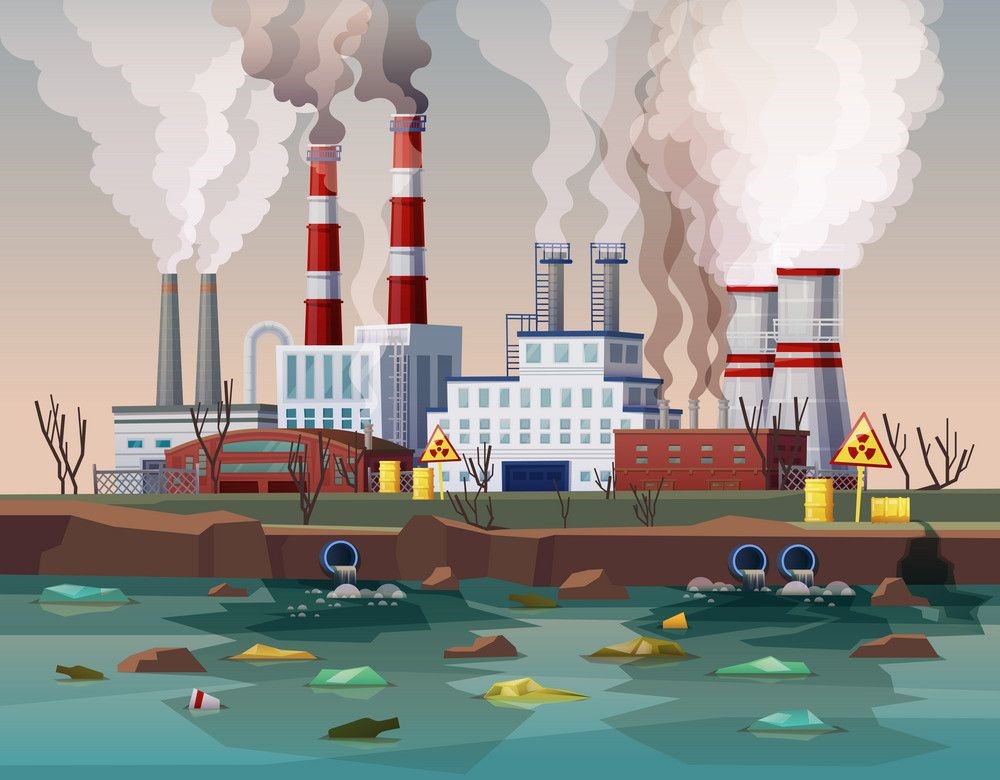Reviving Rivers, Restoring Life: Innovative Approaches to Tackle Water Pollution in Indonesia
source: https://pin.it/1mRU2n2
Water pollution has emerged as a serious and urgent environmental problem in Indonesia, threatening the country’s valuable water resources and ecosystems. In PP No. 20/1990 concerning Control of Water Pollution, this is defined as: “Water pollution is the entry or inclusion of living things, substances, energy, and or other components into water by human activities so that the quality of the water decreases to a certain extent. which causes water to no longer be used according to its designation.
Indonesia is leveraging technology and collaborative efforts to tackle water pollution problems head-on. One such innovative approach involves utilizing state-of-the-art water treatment technologies. Moreover, Indonesia has recognized the importance of community participation in overcoming the current water pollution problem. involvement of local communities in monitoring water quality and maintaining it can improve water quality in their own environment.
Through this innovative approach, Indonesia seeks to create a sustainable and resilient future for its water resources. By combining technological advances and community involvement, the country is paving the way for a cleaner and healthier water environment.
The existence of river generation as a result of an innovative approach to dealing with water pollution in Indonesia is very beneficial for all living things, such as
- The existence of improved water quality can improve public health. This is because clean water can prevent people from contracting diseases from bacteria that arise in dirty water.
- Having a functioning river can prevent flooding in an area. This is due to one of the causes of flooding, namely the presence of garbage that has accumulated on the banks of the river, as a result of the surrounding community continuously littering, so that the waste covers the waterways and causes water overflow.
- Generation of rivers can improve people’s welfare. The existence of good water quality and the environment around the river can significantly improve the economy and social life of the surrounding community for domestic, agricultural, to industrial needs.
Water pollution can cause various problems that have a negative impact on the environment, human life, and aquatic ecosystems. Some of the problems caused by water pollution include:
- Loss of biodiversity: Water pollution can cause damage to aquatic ecosystems, including loss of fish species, aquatic animals and aquatic plants. Many aquatic organisms are sensitive to changes in water quality, and water pollution can disrupt food chains and reduce biodiversity in aquatic environments.
- Poisoning and human health: Water pollution contains various harmful substances such as heavy metals, pesticides, industrial chemicals and domestic waste. If humans use this polluted water for drinking, bathing, or cooking, it can cause poisoning and serious health problems, including organ disorders, nervous system damage, and cancer.
- Damage to aquatic ecosystems: Water pollution can damage aquatic ecosystems as a whole. Toxic substances in industrial or domestic wastewater can change the balance of ecosystems, reduce oxygen availability, cause eutrophication (excessive growth of algae), and cause the death of aquatic animals and plants. This results in a decrease in water quality and economic losses for sectors such as fisheries and tourism.
How We Solve The Problem
Of course, with the rising problem of vulnerability of river pollution in Indonesia, we choose that the following methods can reduce water pollution. Through an innovative approach, we think that this method will be best to provide effective solutions the following are the methods of implementation:
- Using the Latest Water Treatment Technology
By developing and implementing modern water management technology, it can eliminate pollution in water since the physical processing is carried out by utilizing the mechanical properties of water, for example by carrying out precipitation, filtration (filtering), adsorption (absorption) without the addition of chemicals, for example by using a water filtration system
- Implement a Green City Plan
The point is that by massively promoting the design of urban areas, this has the aim of reducing rainwater runoff which carries pollutants into rivers, besides being useful for reducing water pollution, this also makes the residence have a comfortable impression for life.
- Combining Inter-Citizen Cooperation and Private Partnerships
Of course if we want to reduce pollution in water we will definitely need help, here the role of the Private Partnership is to develop technology with the aim of reducing the occurrence of sustainable water pollution. Then the role of residents is to become an active participant by utilizing technology from Private Partnerships to conduct education and training to fellow citizens with the aim of protecting and preserving the environment where they live.
References :
- Pencemaran air. (2022, March 17). Wikipedia. https://id.wikipedia.org/wiki/Pencemaran_air
- Dinas Lingkungan Hidup dan Kehutanan Provinsi Banten | Website Resmi Dinas Lingkungan Hidup dan Kehutanan Daerah Provinsi Banten. (n.d.). Dlhk.bantenprov.go.id. https://dlhk.bantenprov.go.id
- webmaster. (n.d.). Manfaat Air Bersih dan Menjaga Kualitasnya. Direktorat Promosi Kesehatan Kementerian Kesehatan RI. https://promkes.kemkes.go.id/manfaat-air-bersih-dan-menjaga-kualitasnya#:~:text=Dengan%20menggunakan%20air%20bersih%20kita
- Penyebab, Dampak Dan Pengendalian Pencemaran Air. (2020, October 16). Sanitarian Kit. https://sanitariankit.id/penyebab-dampak-dan-pengendalian-pencemaran-air-3/
- Marliah, S. (2023, June 27). 10 Manfaat Sungai Bagi kehidupan manusia. Best Seller Gramedia. https://www.gramedia.com/best-seller/manfaat-sungai-bagi-kehidupan-manusia/
- 8 Cara Mengatasi Pencemaran Air- CLEANIPEDIA. (n.d.). Cleanipedia. https://www.cleanipedia.com/id/cara-mengatasi-pencemaran-air.html


